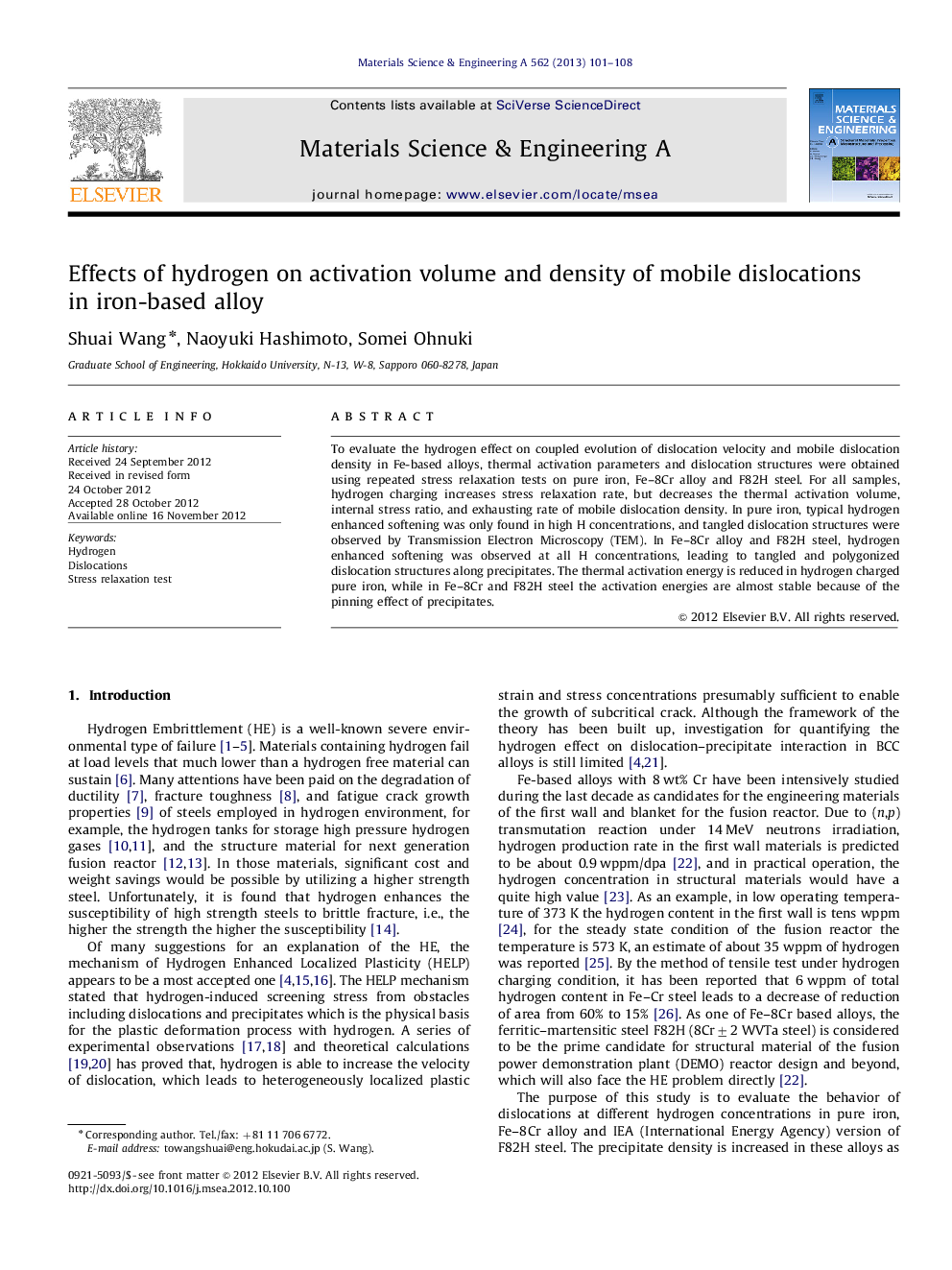| Article ID | Journal | Published Year | Pages | File Type |
|---|---|---|---|---|
| 1576605 | Materials Science and Engineering: A | 2013 | 8 Pages |
To evaluate the hydrogen effect on coupled evolution of dislocation velocity and mobile dislocation density in Fe-based alloys, thermal activation parameters and dislocation structures were obtained using repeated stress relaxation tests on pure iron, Fe–8Cr alloy and F82H steel. For all samples, hydrogen charging increases stress relaxation rate, but decreases the thermal activation volume, internal stress ratio, and exhausting rate of mobile dislocation density. In pure iron, typical hydrogen enhanced softening was only found in high H concentrations, and tangled dislocation structures were observed by Transmission Electron Microscopy (TEM). In Fe–8Cr alloy and F82H steel, hydrogen enhanced softening was observed at all H concentrations, leading to tangled and polygonized dislocation structures along precipitates. The thermal activation energy is reduced in hydrogen charged pure iron, while in Fe–8Cr and F82H steel the activation energies are almost stable because of the pinning effect of precipitates.
